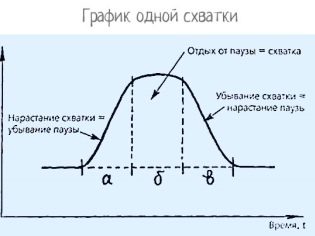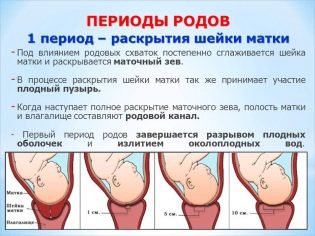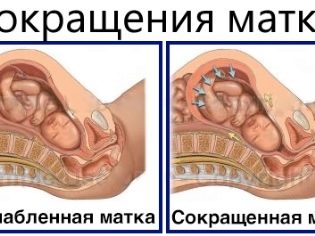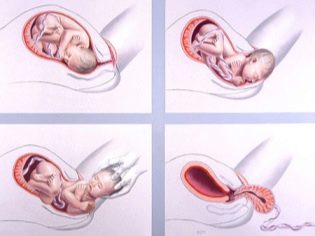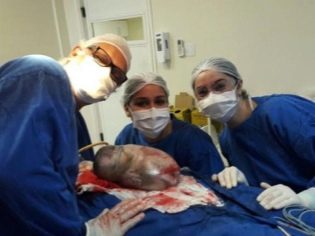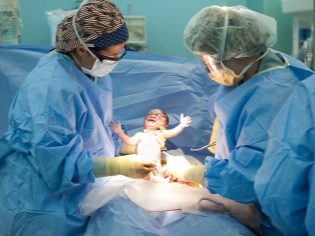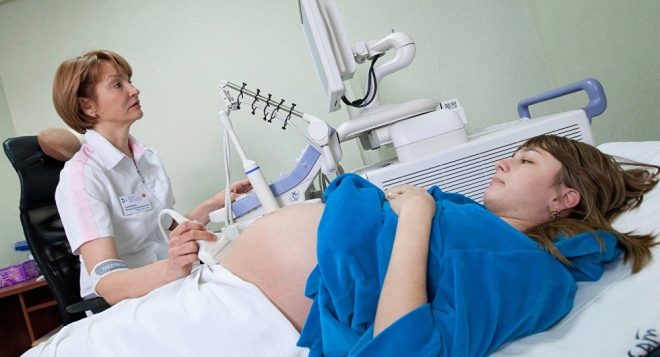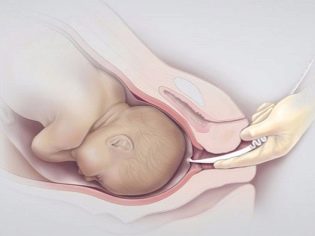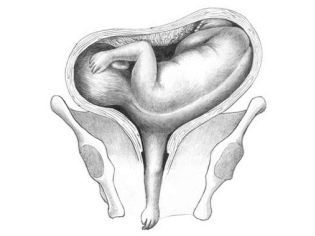What usually happens first - waste water or begin to fight?
When a woman enters the last weeks of pregnancy, together with the preparation of a children's dowry and the collection of things at the maternity hospital, she involuntarily thinks about how things will be in reality.
The main question - how to start childbirth? With the discharge of water or with the appearance of characteristic labor pains? In this article we will try to answer this difficult question.
How does this happen?
And it happens in different ways. Children are not alike, pregnancies cannot be identical, and any obstetrician will confirm this. Childbearing is a purely individual process, with its own complexities and nuances. Childbirth also begins at all differently. The most preferable, from the point of view of doctors, is the sequence in which regular true contractions begin first.
They should not be confused with training. Unlike false, true contractions can not be removed by changing the position of the body or taking the pill "No-shpy", a warm shower will not help either, and there will be no sense from the horizontal position of the body. True contractions, if they begin, occur with simultaneous smoothing and disclosure of the cervix, which was tightly closed throughout pregnancy.
This process is not controlled by the will of the woman, cannot be reversible, and therefore the true contractions are constantly increasing, intensifying, becoming longer, and the intervals between them are shorter.
As soon as the scrum is repeated every 10-15 minutes, you need to go to the hospital. It’s not worth waiting for the water to drift away.
If childbirth proceeds correctly, according to the classical pattern described in all textbooks on obstetrics, the waters flow away without the intervention of physicians, when the contractions become quite frequent and strong. The pressure of the walls of the uterus at the time of tension (at the peak of the contraction) provokes a violation of the integrity of the fetal bladder, as a result of which the waters are poured out, the baby begins to move forward along the birth canal. Start attempts.
In general terms, ideal births have the following sequence:
- the cervix becomes smoother, it is compared with the body of the uterus, disclosure begins;
- smooth muscle fibers become shorter with each subsequent contraction;
- the walls of the uterus become more dense;
- outer pharynx opens, disclosure increases with each bout;
- pressure on the bubble increases;
- under pressure from the head of the fetus and the amniotic sac itself, the inner pharynx opens;
- there is an outpouring of water and attempts begin - the uterus "pushes" the baby out.
Attempts end with the birth of a child, then the placenta comes out within 20-45 minutes. This completes the correct textbook delivery to the great joy of all participants in this process.
Like everything perfect, classic childbirth is a rarity.
There are quite a few variants of the norm, and therefore the sequence may be different. To the question of whether the contractions could begin without the discharge of water, we answered, but not completely. Very rarely, the waters diverge at the very last moment, and the child is born in the amniotic membrane, in which he passed through the birth canal.
In this case, they say that the baby was "born in a shirt."Popular rumor and omens attribute to such people incredible luck and great luck throughout their lives.
The waters are gone, but there are no contractions
This type of childbirth is considered unfavorable. But everything will depend on how ready the woman's body was for the upcoming labor and how quickly the contractile activity of the uterus will begin.
If contractions begin to develop immediately after the discharge of water, they are strong enough, the neck opening occurs at an optimal rate, then the forecasts are more favorable. If the labor is weak, painful, the cervix dilates slowly or does not open, the urgent emergency cesarean section is considered the best solution.
A long stay of the baby in an anhydrous environment (more than 8-12 hours) can lead to the occurrence of acute hypoxia, death of the child, and irreversible consequences for his health resulting from post-hypoxic disorders in the brain. The 48-hour non-water period is considered critical (deadly), although everything is ambiguous here, and miracles happen.
Situations when the waters first drift away, they do not tolerate even a minute delay.
A woman needs to be taken as soon as possible to the hospital of the obstetric institution, where doctors will be able to assess the child’s condition, record his heart activity, physical activity, assess the degree of ripening of the cervix, and make a quick and correct decision - to stimulate labor or give the patient surgical intervention.
The main danger of an anhydrous period lies in the possibility of infection of the fetus. The fact is that the waters are sterile. If they are gone, the baby is deprived of protection. Without amniotic fluid and mucus plug bacteria and viruses can penetrate directly to the crumbs, and he is clearly not ready to meet with them.
Water outpouring earlier contractions is usually caused by inflammatory or viral diseases that a woman suffered during pregnancy, the presence of isthmic-cervical insufficiency, polyhydramnios, twins or triplets, thin membranes (for idiopathic reasons that cannot be established). Also, the early outpouring of water before contractions is fraught with falling on the stomach, on the ass, on the back in late pregnancy.
Simultaneous process
Sometimes the contractions begin almost simultaneously with the discharge of amniotic fluid. In this case, hospitalization should also be urgent. Staying at home and waiting for contractions to gain the necessary frequency and frequency, which was so much talked about in courses for expectant mothers, is dangerous.
The risks are the same as in the case of premature outpouring of water. The first is that the baby may experience acute hypoxia, often intrauterine infection occurs, especially if some infections have not been treated by the woman herself.
The situation in which contractions began almost simultaneously with the withdrawal of water is dangerous by the development of rapid, rapid delivery, which, in turn, are dangerous for birth trauma, premature detachment of the placenta, massive bleeding and other serious complications for the child and mother.
There is a fight, there is no break.
In some situations when the membranes in which the baby is located are too dense, the intervention of doctors is required. When there is no time to wait and on the approach of the attempt, the neck is fully opened, the whole sac of sac is punctured, so-called amniotomy is performed.
Use a long crochet to puncture the bubble and make sure that the water does not overflow. Rapid discharge of water can lead to the loss of umbilical cord loops, loss of the handle or leg of the fetus into the genital tract.
Such births increase the likelihood of getting a tiny birth injury dozens of times.Everything that happens afterwards, after falling out, is a real delicate and practically jewelry art performed by an obstetrician, he needs to quickly and carefully trim the limbs of the child back, or give birth to a dropped out limb forward.
Monitoring the discharge of water after amniotomy is an important condition for the prevention of precipitations and complications of childbirth. The reason for the pathological endurance of the fetal bladder, due to which it does not break at the right time, may be high water flow, poor opening of the cervix, the wrong position of the baby in the uterus, as well as large fruit.
findings
Modern women want to know a lot about the process of childbirth, but extra knowledge, according to obstetricians, only harm them in the process of childbirth. So the best thing is to trust your doctors, and everything will be fine.
For signs of the onset of labor, see below.



